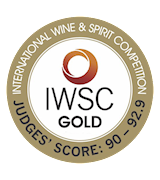TABLE OF CONTENTS
Best Greek Red Wine Types
Naousa is a Greek appellation located in the region of Macedonia. The wines produced under the designation are made exclusively from Xynomavro—an indigenous Greek grape that is often compared to Pinot Noir and Nebbiolo. Naousa wines display the perfect balance of tannins, sugar, and acidity, while the typical aromas and flavors include a complex combination of savory notes that are often reminiscent of dark and red fruit, tomatoes, plums, earth, tobacco, herbs, and spices.
Naousa ages exceptionally well and is rarely enjoyed young. Because of its complexity and finesse, it is often cited as one of the finest Greek wines. An ideal pairing for this tannic wine is game, lamb, tomato-based sauces, rich stews, sausages, mushrooms, and aged cheese.
Agiorgitiko is the most widely planted red grape variety in Greece. It is cultivated in several wine regions, but Nemea, where the grape originated, is its most important region. Agiorgitiko is a versatile grape that can be vinified into several styles, and it is often used as a backbone in many Greek blends.
It is best known as a full-bodied red, usually coming from Nemea, but it can also be made into young, light red wines, fresh rosés, or dessert styles. Agiorgitiko wines are typically characterized by fruity aromas, which are sometimes accompanied by notes of sweet spices.
Xinomavro is a noble Greek red grape mostly cultivated in northern Greece. It is the second most planted dark-skinned grape in the country that is often compared to the legendary Italian Nebbiolo. The grape is usually made into dry red wines with a strong savory character, great personality, and good acidity.
The best examples come from Naousa PDO. In their youth, wines made from Xinomavro are tannic and high in acidity, but they will typically gain complexity and elegance as they age. The typical aroma found in these wines is reminiscent of sour cherries and pomegranate, along with hints of tomatoes, mushrooms, spice, and black olives.
Often dubbed as a true Mediterranean grape, this red-skinned variety from Greece typically produces aromatic wines that are high in alcohol but usually lack acidity and color. This is why Kostifali is mainly used in blends—most commonly with local Mandilaria.
The grape is traditionally cultivated on Crete. Kostifali is a high-yield grape, and despite its downsides, it can produce light, approachable, and balanced wines with a fruity character and hints of spices, herbs, and flowers. These wines are soft and mostly enjoyed young.
Mavrotragano is an old Greek variety that is currently experiencing a revival. The grape originates from Santorini, and it was mostly used in bland dessert wines and blends. It was nearly extinct until the winemakers Haridimos Hatzidakis and Paris Sigalas used a novel approach to create concentrated dry wines that showed fantastic potential.
The wines made from Mavrotragano are densely colored with fruity and spicy notes reminiscent of dark berries, cinnamon, tobacco, and white pepper. They often have herbal and earthy nuances, and most examples will have bright acidity and firm, velvety tannins.
Located in the northeastern part of the Peloponnese, Nemea is a Greek appellation that produces varietal red wines from the native Agiorgitiko grapes. Although the wines may vary in style, from easy-drinking to rich and full-bodied, they typically display flavors and aromas reminiscent of red and black berries, plums, and prunes, while oak-aging tends to highlight spicy nuances of nutmeg and black pepper.
Because of their versatile character, Nemea wines can match a wide array of dishes. Aged varieties pair well with sausages and grilled or roasted meat, including pork, lamb or poultry, while lighter styles may match stews and cheese.
Limniona is a red Greek grape native to Thessaly. Although it is still rare, it is slowly becoming one of the trendiest Greek wines. The grape is used in the production of dry red wines. It was mainly used as a blending grape throughout history, and its monovarietal potential has only recently been promoted.
Limniona-based wines are easy-drinking, smooth, and elegant. The aroma is reminiscent of dark berries, pomegranate, and maraschino cherries, often accompanied by herbal notes. These wines will typically have high acidity and mineral backbone, while the tannins are firm but without being aggressive.
Ikaria has been known for its wine production since the ancient times when the wine carried the name Pramnios Oinos—given after the mountain peak Pramnos. The wine was produced from sun-dried Fokiano grapes, and it was quite potent, with 18% ABV.
In modern winemaking, the grape is still used in the production of dry and naturally sweet wines. Dry wines made from Fokiano are traditionally produced by pouring must into clay pots (pitharia) which are buried and covered with stones while the wine ferments.
Mavro Messenikola is a red wine grape variety from Greece, named after the region of Messenikolas in Thessaly. This grape is used primarily to produce dry red wines. The Mavro Messenikola designation of origin was established in 1989. The wines produced under this designation must be made from at least 85% Mavro Messenikola grapes, with the remainder typically being made up of other local or international red grape varieties.
The wines from Mavro Messenikola are known for their rich color, fruity aroma, and their potential to age well.
TABLE OF CONTENTS
Best Greek Red Wine Producers
AWARDS

Concours Mondial de Bruxelles - Grande Médaille d'or
2024, 2023

Decanter World Wine Awards - Platinum
2016
BEST Avantis Estate & Winery Wines
AWARDS

Frankfurt International Trophy - Grand Gold
2024, 2019, 2017
BEST Ktima Vourvoukeli Wines
AWARDS

Concours Mondial de Bruxelles - Grande Médaille d'or
2024
BEST Mega Spileo Estate Wines
AWARDS

Frankfurt International Trophy - Grand Gold
2024
BEST Barafakas Winery Wines
AWARDS

IWSC- International wine & spirit competition - Gold
2022

Concours Mondial de Bruxelles - Grande Médaille d'or
2023
BEST Kir-Yianni Winery Wines
AWARDS

Frankfurt International Trophy - Grand Gold
2019
BEST Thivaiki gi Katrisiosis Panagiotis Wines
AWARDS

Frankfurt International Trophy - Grand Gold
2019
BEST Evangelos Tsantalis s.a Wines
AWARDS

Concours Mondial de Bruxelles - Grande Médaille d'or
2024, 2019

Decanter World Wine Awards - Platinum
2021, 2017
BEST Ktima Gerovassiliou Wines
AWARDS

IWSC- International wine & spirit competition - Gold
2024, 2023, 2022, 2021, 2020

Decanter World Wine Awards - Best in Show
2023, 2020

Decanter World Wine Awards - Platinum
2022, 2021, 2020
BEST Estate Argyros Wines
TABLE OF CONTENTS
Best Greek Red Wines
AWARDS

Concours Mondial de Bruxelles - Grande Médaille d'or
2024
AWARDS

Concours Mondial de Bruxelles - Grande Médaille d'or
2024
AWARDS

Frankfurt International Trophy - Grand Gold
2024
AWARDS

Frankfurt International Trophy - Grand Gold
2024
AWARDS

Concours Mondial de Bruxelles - Grande Médaille d'or
2023
AWARDS

Frankfurt International Trophy - Grand Gold
2017
AWARDS

Frankfurt International Trophy - Grand Gold
2019
AWARDS

Frankfurt International Trophy - Grand Gold
2019
AWARDS

Frankfurt International Trophy - Grand Gold
2019
AWARDS

Decanter World Wine Awards - Platinum
2021
TasteAtlas food rankings are based on the ratings of the TasteAtlas audience, with a series of mechanisms that recognize real users and that ignore bot, nationalist or local patriotic ratings, and give additional value to the ratings of users that the system recognizes as knowledgeable. TasteAtlas Rankings should not be seen as the final global conclusion about food. Their purpose is to promote excellent local foods, instill pride in traditional dishes, and arouse curiosity about dishes you haven’t tried.











